 February 27, 2020 John E. Ross, KD8IDJ, Editor
| ||||||
ARRL Seeks a New Chief Executive Officer ARRL is seeking an experienced radio amateur to be Chief Executive Officer (CEO) at its headquarters in Newington, Connecticut. The CEO is the top compensated employee in ARRL's management structure and oversees all operations in collaboration with the President and the Board of Directors, in accordance with ARRL's Articles of Association, Bylaws, and Board policies. The successful candidate will ensure day-to-day management of ARRL, including fiscal operations and will oversee and make certain that its fund-raising, marketing, human resources, technology, advocacy, and governance strategies are effectively implemented. Essential CEO Functions Include:
The successful candidate will be a strategic thinker with a record of significant amateur radio experience and a broad understanding of its operational, technical, regulatory, and social facets. The CEO will be responsible for effective financial and operational management and oversight. CEO candidates should possess a bachelor's degree or equivalent (master's degree preferred), be an active radio amateur who has initiated or led a significant amateur radio activity within the past 10 years, and have 10 years of management and supervisory experience. Candidates should be able to demonstrate ability in providing effective leadership and management of business operations. The position is located at ARRL Headquarters, and the successful candidate will be required to establish a residence in the Hartford, Connecticut, area. For More Information The CEO Position Announcement includes details. Interested candidates should submit a cover letter and resume via e-mail to ARRL Human Resources Assistant Monique Levesque. ARRL Comments in Opposition to FCC Plan to Delete the 3.4 GHz Band ARRL has filed comments opposing an FCC proposal to delete the 3.3 - 3.5 GHz secondary amateur allocation. The comments, filed on February 21, are in response to an FCC Notice of Proposed Rulemaking (NPRM) in WT Docket 19-348 in which the FCC put forward a plan to remove "existing non-federal secondary radiolocation and amateur allocations" in the 3.3 - 3.55 GHz band and relocate incumbent non-federal operations. The FCC's proposal was in response to the MOBILE NOW [Making Opportunities for Broadband Investment and Limiting Excessive and Needless Obstacles to Wireless] Act, enacted in 2018 to make new spectrum available for mobile and fixed wireless broadband use. ARRL noted that amateur "There is no reason suggested by the Commission, or known to us, why the secondary status for amateur radio operations should not be continued for the indefinite future," ARRL said in its comments. "We understand that secondary commercial users are less flexible than amateur radio users and may desire to relocate to protect continued provision of services and service quality. Radio amateurs, by contrast, benefit from having technical knowledge and no customer demands for continuous service quality, more flexibility to make adjustments, and often have the technical abilities necessary to design and implement the means to coexist compatibly with the signals of primary users." ARRL pointed to amateur radio's "decades-long experience observing and experimenting with radiowave propagation" in the 3.3 - 3.5 GHz band that includes mesh networks, amateur television networks, weak signal long-distance communication, Earth-Moon-Earth (moonbounce) communication, beacons used for propagation study, and amateur satellite communications. In its comments, ARRL argued that it would be "premature" to remove the current secondary amateur radio allocation. Radio amateurs have established extensive infrastructure for the current band and are engaged in construction and experimentation that includes innovative "mesh networks" and amateur television networks that can be deployed to support public service activities. "This spectrum should not be removed from the amateur radio secondary allocation and left unused," ARRL told the FCC. "Only at a later time may an informed assessment of sharing opportunities be made in the specific spectrum slated for re-allocation.... This depends upon the Congressionally mandated NTIA studies of sharing or relocation options that have yet to be completed and, if all or part of this spectrum is re-allocated, the nature and location of buildout by the non-federal users." The National Telecommunications and Information Administration (NTIA) oversees spectrum allocated to federal government users. ARRL noted that radio amateurs have established extensive infrastructure for the current band and are engaged in construction and experimentation that includes innovative "mesh networks" and amateur television networks that can be deployed to support public service activities. "Even if suitable new spectrum could be found for the existing amateur uses -- which is difficult before the spectrum musical chairs activity is concluded -- the costs to radio amateurs would be significant and be borne with no countervailing public benefit," ARRL told the FCC. "If the advent of new primary licensees forecloses some types of secondary operations, the amateur community will reevaluate the situation when some certainty exists," ARRL concluded. AMSAT Cites Need for Adequate Spectrum in Opposing Deletion of 3.4 GHz Band AMSAT has commented on the FCC Notice of Proposed Rulemaking (NPRM) in WT Docket 19-348 that proposes to delete the 3.3 - 3.5 GHz (9 centimeter) amateur band and relocate incumbent non-federal operations. The band includes the 3.40 - 3.41 GHz Amateur Satellite Service allocation. In its remarks, AMSAT said it opposes deletion of the allocation and stressed the necessity of having adequate microwave spectrum available for future amateur satellite projects, including AMSAT's GOLF program and the Lunar Gateway. AMSAT acknowledged that the 3.4 GHz Amateur Satellite Service allocation is "These potential uses include a future amateur satellite in geostationary orbit above the Americas," AMSAT said, explaining that the segment could support uplink or downlink frequencies for such a spacecraft without potential interference to worldwide activities involving space stations in high-Earth or lunar orbit. The most-desirable allocations for use as uplinks are between 2.4 GHz and 5.67 GHz -- 80 MHz in all, AMSAT told the FCC. "As many of the proposed uses include amateur television and high-speed data transmission with satellites in high-Earth orbit or lunar orbit, these allocations may quickly become inadequate," AMSAT said. AMSAT said several non-amateur satellites use the broader 3.3 - 3.5 GHz amateur allocation, which also sees wide use for amateur radio mesh networking, EME communications, and contesting. "The Amateur Satellite Service continues to provide immense value to the growing field of small satellites," AMSAT concluded. "Experiments conducted by amateur satellites...continue to inform the development of the commercial small satellite industry. Additionally, student participation in amateur satellite projects provides both inspiration for young men and women to pursue careers in the commercial satellite industry and practical experience for those careers. "A strong and robust Amateur Satellite Service will continue to benefit the public interest and inspire future developments in satellite technology," AMSAT said. "Continued progress in achieving these goals requires adequate spectrum, especially in suitable microwave bands." -- Thanks to AMSAT News Service via AMSAT Executive Vice President Paul Stoetzer, N8HM ARRL Podcasts Schedule
Both podcasts are available on iTunes (iOS) and Stitcher (Android) as well as on Blubrry -- On the Air | Eclectic Tech. ARRL Announces Interruptions to Online Services The ARRL website and other online services will be offline on Friday, February 28, for up to 8 hours in order to conduct necessary maintenance. The outage will begin at 0500 UTC and should end by 1300 UTC. It will affect the main ARRL website, the ARRL Store, and the ARRL contesting-related pages, including the log submission page. Logbook of The World (LoTW), email, and all ARRL Headquarters systems will not be affected. As part of ARRL Headquarters' transition to new internet service providers, an interruption of internet access at ARRL Headquarters is set for Wednesday, March 4, starting at 2300 UTC. The interruption will last no longer than 4 hours. During the work period, these services will be unavailable: Logbook of The World (LoTW), Online DXCC, International Grid Chase Archive, National Parks on the Air Archive, Centennial QSO Party Archive, W1AW Echolink Conference Server, and VPN access to Headquarters. Email to Headquarters will remain online, and the ARRL website (www.arrl.org) will remain operational throughout the maintenance period, along with the contest and advertising pages. We apologize for any inconvenience. FCC Turns Down Amateur Licensee's Appeal In a Memorandum Opinion and Order (MO&O) released on February 20, the FCC turned down an appeal by William F. Crowell, W6WBJ, of Diamond Springs, California, of an Administrative Law Judge's (ALJ) dismissal of Crowell's amateur radio license renewal application. Chief ALJ Richard L. Sippel ruled in 2018 that Crowell "failed to prosecute his application by refusing to attend a hearing scheduled by the judge," and that this warranted dismissal of Crowell's 2007 renewal application. The FCC Wireless Telecommunications Bureau had designated Crowell's renewal application for hearing based on allegations that he had violated the Communications Act and FCC rules by causing intentional interference and by transmitting one-way communications, indecent language, and music on amateur The case was interrupted by what the FCC in the MO&O called, "a hiatus of several years, during which Crowell's petition to disqualify the Judge was pending." In August 2016, the FCC imposed a $25,000 fine on Crowell for intentional interference and transmitting prohibited communications. The FCC said in a Forfeiture Order (FO) that the penalty "is based on the full base forfeiture amount as well as an upward adjustment reflecting Mr. Crowell's decision to continue his misconduct after being warned that his actions violated the Communications Act and the Commission's rules." The FCC noted that Crowell did not deny making the alleged transmissions but argued in large part that they were protected by the First Amendment of the Constitution," the Forfeiture Order said. The February 20 MO&O does not reference the Forfeiture Order or its disposition. When the renewal application litigation resumed in 2017, Crowell asked that the hearing be moved to the Sacramento, California, area, arguing that he could not afford to travel to Washington. Sippel denied the motion. "In the Dismissal Order, the Judge responded to Crowell's refusal to attend a hearing in Washington, D.C., by granting the Enforcement Bureau's motion to dismiss Crowell's application," the FCC said in its MO&O. The ALJ held that Crowell's refusal to attend a hearing in Washington, DC, "constituted a failure to prosecute and thereby effectively violated Section 1.221(c) of the rules, which requires dismissal if an applicant fails to commit to appear on the date fixed for hearing." The Judge agreed with the Enforcement Bureau that many of the arguments Crowell raised on appeal "are not properly before us in reviewing the Dismissal Order and should be disregarded." Crowell's amateur license expired in 2007, but he has been permitted, under FCC rules, to operate while his renewal application remains pending. The K7RA Solar Update Tad Cook, K7RA, Seattle, reports: Except for the first day of the month, we've seen no sunspots through the rest February. I keep watching for possible sunspot activity over the solar horizon. Recently I noticed a Average daily solar flux changed slightly from 70.9 to 70.5 over the recent week, and geomagnetic indicators remained quiet. Predicted solar flux over the next 45 days is 70 on February 27 - March 3, and 71 on March 4 - April 11. Predicted planetary A index is 5 on February 27 - March 3; 12, 12, and 8 on March 4 - 6; 5 on March 7 - 14; 10, 8, 10, 8, 5, 10, and 8 on March 15 - 21; 5, 8, 12, and 10 on March 22 - 25; 5 on March 26 - 30; 20, 15, and 8 on March 31 - April 2, and 5 on April 3 - 11. Sunspot numbers for February 20 - 26 were 0, 0, 0, 0, 0, 0, and 0, with a mean of 0. The 10.7-centimeter flux was 70.8, 71.2, 70.2, 70.1, 70.2, 70.6, and 70.1, with a mean of 70.5. Estimated planetary A indices were 8, 14, 9, 5, 4, 3, and 4, with a mean of 6.7. Middle latitude A index was 5, 10, 7, 4, 3, 3, and 3, with a mean of 5. A comprehensive K7RA Solar Update is posted Fridays on the ARRL website. For more information concerning radio propagation, visit the ARRL Technical Information Service, read "What the Numbers Mean...," and check out K9LA's Propagation Page. A propagation bulletin archive is available. Monthly charts offer propagation projections between the US and a dozen DX locations. Share your reports and observations. Just Ahead in Radiosport
See the ARRL Contest Calendar for more information. For in-depth reporting on amateur radio contesting, subscribe to The ARRL Contest Update via your ARRL member profile email preferences. Auxiliary Communications Training to Be Held in Conjunction with Dayton Hamvention® Representatives of the Cybersecurity and Infrastructure Security Agency (CISA) will be on hand in conjunction with Dayton Hamvention® to conduct CISA's nationally recognized National Incident Management System (NIMS)/ICS-compliant AUXCOMM training course. The course will be held May 12 - 14 at the Beavercreek Fire Department Training Room in Beavercreek, Ohio. More than 3,000 radio amateurs from around the country have completed the course, which is aimed at training ham radio volunteers to support local, regional, and state governments with emergency communication services, if requested. This course explains the structure of the Communications Unit (COMU) and how to provide emergency communication in a public safety context. It also goes deeper into the National Qualifications System/NIMS framework. Those who want to sign up for the CISA/Department of Homeland Security AUXCOMM course must meet certain prerequisites and provide electronic/scanned images of certain documents prior to the registration deadline. The prerequisites include:
Applicants may attach scanned copies to an email with "Hamvention AUXCOMM" in the subject line. Information will be reviewed, and applicants will be informed whether they have been selected for a seat in the course. This will be an intensive 3-day version of the course, with facilitated lectures and student exercises conducted by professional AUXCOMM instructors. The course provides time for interactive discussions and exercises. Direct questions via email to CISA. This year's Dayton Hamvention will include an AUXCOMM forum, which will provide a look at the new AUXCOMM 509, which will become the official position description of AUXCOMM personnel within the proposed Communications Branch, the new AUXCOMM Subcommittee of the Communications Section Task Force, and what's in store for AUXCOMM's future. It's Never Too Late to Upgrade George "Buck" Miner, K6RFE, of Sun City, Arizona, has been an active ham since earning his first license in 1956, upgrading to a General-class license 10 months later. It wasn't until January 26, Miner began losing his sight at a young age and became totally blind when he was 27. That never slowed him down, however. Over the intervening years, he repaired TVs and sold, repaired, and installed two-way radios. He even managed a 200-acre ranch on the northern California coast, where he fished and dived for abalone. Miner was a local celebrity, too, producing and hosting a live radio show in Eureka, California -- "Chuck Star and his Rambling Guitar" -- on which he told stories, sang, and played guitar. To facilitate living alone, he learned to cook for himself and has produced several "Buck's Miracle Kitchen" YouTube videos that humorously demonstrate how he cooks without sight. Miner has written several books, including an autobiography, My Darkness under the Sun. He's also composed hundreds of songs, including "CQ Boogie," and he continues to play his guitar and sing for fun and profit. -- Thanks to Bob Ringwald, K6YBV In Brief...
The NEMO-1 WSPR buoy launched by AMSAT-Argentina (AMSAT-LU) on January 30 was retrieved 12 days later by a fishing vessel. The buoy transmitted WSPR on 14.095.6 MHz and APRS on VHF FM using the call sign LU7AA. The captain of the tuna vessel Juan Pablo II considered that the buoy was partially submerged, decided to retrieve it, and informed AMSAT-LU. The NEMO-1 traveled another 8 days aboard the tuna vessel, arriving at Mar del Plata on February 19, where members of the Mar del Plata Radio Club were holding it until members of AMSAT-LU could recover it. The buoy will be reconditioned, and a new launch is planned, this time taking the buoy more than 200 kilometers (124 miles) offshore, so that it will navigate freely.
Upcoming ARRL Section, State, and Division Conventions
Find conventions and hamfests in your area.
. .
Subscribe to...
Free of charge to ARRL members...
| ||||||
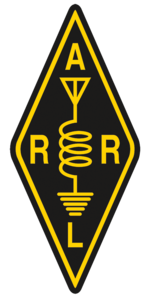 Leading the headquarters staff and field volunteers, in response to Board policy, in the development and implementation of effective programs for the promotion and growth of amateur radio and the provision of services to members.
Leading the headquarters staff and field volunteers, in response to Board policy, in the development and implementation of effective programs for the promotion and growth of amateur radio and the provision of services to members. radio has a long history of successful coexistence with primary users of the band.
radio has a long history of successful coexistence with primary users of the band.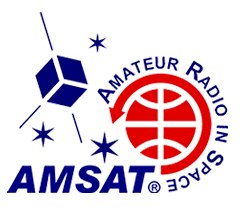 not currently used by any amateur satellites and that it is unsuitable for worldwide communication
not currently used by any amateur satellites and that it is unsuitable for worldwide communication 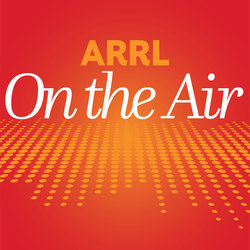 The February 13 episode of the On the Air podcast focuses on building the hands-free soldering tool from the article, "Extend Your Handheld's Range with a Simple Ground-Plane Antenna," seen in the January/February 2020 issue of On the Air magazine; a discussion of open-wire feed lines, and an interview with a public service volunteer. New On the Air podcast episodes are available monthly.
The February 13 episode of the On the Air podcast focuses on building the hands-free soldering tool from the article, "Extend Your Handheld's Range with a Simple Ground-Plane Antenna," seen in the January/February 2020 issue of On the Air magazine; a discussion of open-wire feed lines, and an interview with a public service volunteer. New On the Air podcast episodes are available monthly. The new episode of Eclectic Tech podcast goes live February 27. Episode 2 touches on these topics: Most expensive home PC ever; Alexa and amateur radio; solar activity's influence on whales, and a HamSCI update from Ward Silver, N0AX.
The new episode of Eclectic Tech podcast goes live February 27. Episode 2 touches on these topics: Most expensive home PC ever; Alexa and amateur radio; solar activity's influence on whales, and a HamSCI update from Ward Silver, N0AX..jpg) frequencies. The hearing was set to be held in Washington, DC, and Crowell filed a notice of appearance certifying that he would appear and present his case.
frequencies. The hearing was set to be held in Washington, DC, and Crowell filed a notice of appearance certifying that he would appear and present his case.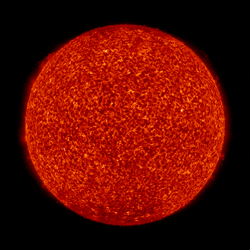 promising white area, and, in the past few days,
promising white area, and, in the past few days, 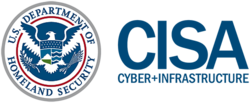 Only 30 slots are available, and the registration cut-off is April 1.
Only 30 slots are available, and the registration cut-off is April 1.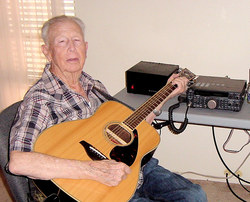 however, that he upgraded to Amateur Extra -- at the age of 94.
however, that he upgraded to Amateur Extra -- at the age of 94..jpg) Alex Gromme, 5B4ALX, has postponed his March 18 - April 2 T30ET DXpedition to Tarawa (West Kiribati) because of the coronavirus (COVID-19) outbreak. The Kiribati Ministry of Health told Gromme that he would need to be quarantined for 14 days in Honiara, Solomon Islands, before getting medical approval to continue on to Kiribati. "T30ET is currently postponed, not deleted," Gromme said on his
Alex Gromme, 5B4ALX, has postponed his March 18 - April 2 T30ET DXpedition to Tarawa (West Kiribati) because of the coronavirus (COVID-19) outbreak. The Kiribati Ministry of Health told Gromme that he would need to be quarantined for 14 days in Honiara, Solomon Islands, before getting medical approval to continue on to Kiribati. "T30ET is currently postponed, not deleted," Gromme said on his .jpg) A working scale model of an HF curtain array antenna is on display at the
A working scale model of an HF curtain array antenna is on display at the 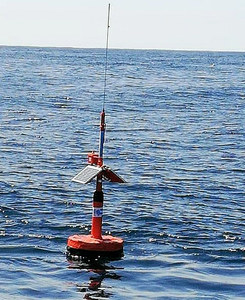
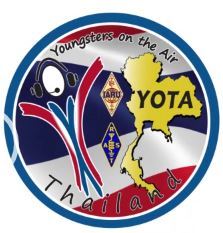 The first IARU Region 3 (Asia/Pacific) Youngsters on the Air (YOTA) camp will take place in Thailand on October 1 - 3. The Radio Amateur Society of Thailand (RAST) will sponsor the event. YOTA is a rapidly growing group of young radio amateurs with the goal of getting more young people interested in amateur radio. Every year, young radio amateurs will meet in a different IARU Region 3 country to exchange ideas and experiences. The inaugural camp will be held at the Rock Garden Beach Resort in Rayong. More information about the
The first IARU Region 3 (Asia/Pacific) Youngsters on the Air (YOTA) camp will take place in Thailand on October 1 - 3. The Radio Amateur Society of Thailand (RAST) will sponsor the event. YOTA is a rapidly growing group of young radio amateurs with the goal of getting more young people interested in amateur radio. Every year, young radio amateurs will meet in a different IARU Region 3 country to exchange ideas and experiences. The inaugural camp will be held at the Rock Garden Beach Resort in Rayong. More information about the 







